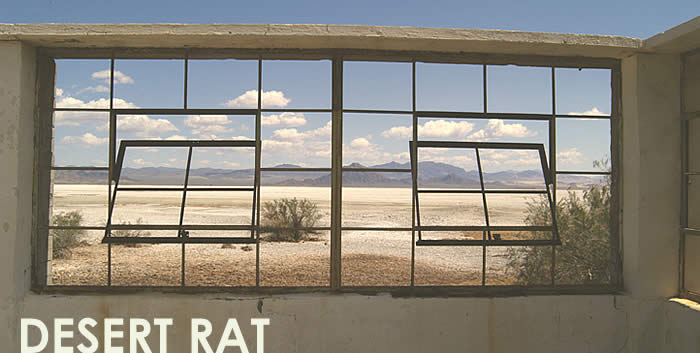A dubious legacy turns out to be the foundation of the Desert Center Studies Center at Zzyzx. Although mankind has inhabited the region known as Soda Springs for nearly 10,000 years, one man dreamed up Zzyzx: Curtis Howe Springer, a radio evangelist and one of the Mojave Desert's most colorful characters.
Before Springer established Zzyzx, native traders, Spanish explorers, missionaries, settlers and soldiers traveled through the region on historic Mojave Road. The U.S. Army had driven Native Americans to reservations after 1860, and miners flocked to the area in search of gold, silver and other minerals. During 1860, it was the site of an Army outpost called Hancock's Redoubt.
In 1944, Springer - who claimed to be a medical doctor and Methodist minister but in reality was neither - illegally settled in this remote spot and filed a mining claim on 12,800 acres of desert land that belonged to the government. Over the years he built a 60-room hotel, a church, a "health spa" in the shape of a cross, a castle, radio station and several other buildings. He called the resort's main street the Boulevard of Dreams - it led to his oasis on Lake Tunedae.
Springer was a self-styled "last of the old medicine men" who made up the name Zzyzx to ensure he always had the last word, and that his resort would be the last name listed in any directory. As a radio evangelist, he promoted and sold controversial remedies, such as Antediluvian Desert Tea, O-M-R (One Minute Relief for indigestion), Hollywood Pep Tonic and Mo-Hair (for curing baldness). His radio programs were carried by 221 stations in the United States and 102 stations in foreign countries.
To build his "health resort," Springer regularly drove a bus to Los Angeles, where he picked up skid row derelicts to serve as laborers in building Zzyzx. Some left as soon as they discovered Springer's no alcohol policy; others stayed for years. He used many salvaged materials in construction, including scrap materials from a World War II Liberty Ship bought at auction that included doorframes and pipes. A decaying launch from the ship can be found on the grounds to this day.
Springer wanted the resort to be self-sufficient, so he raised goats for meat and milk and had a supply of rabbits. But the alkali soil and the hot summer temperatures precluded the growing of any vegetables.
Springer touted the mineral waters as a means whereby visitors would be "externally, internally and eternally cleansed." (The "internal" cleansing came about through the water's laxative properties.)
Thirty years after founding Zzyzx, Springer was arrested by federal marshals in 1974 for alleged violations of food and drug laws and unauthorized use of federal land. The property went to the Bureau of Land Management, and the Desert Studies Center was born under a cooperative management agreement with the Department of the Interior.
Springer died in Las Vegas in 1985 at the age of 88 (or 90, as some accounts go), after serving several years in prison.
In the end - literally - the medicine man did have the last word. Zzyzx is
the last entry in Erwin G. Gudde's California Places Names,
the authoritative work on the origin of place names in the
state. ![]()
For more information about Zzyzxz and the Desert Studies
Center, visit these websites:
• GDL
Alliance
• Mojave
National Preserve



